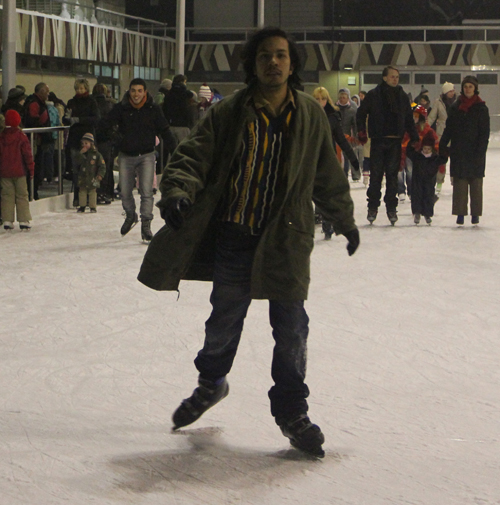
During the Christmas break, our Dean Peter Hajnal proposed a trip to Erika Hess Eisstadion Ice Rink as a holiday gift to the students who refused to desert ECLA’s stronghold during the winter break. All of us high-fived each other in excitement and the impatient wait for our ice-skating excursion began.
A few days of waiting for the eagerly anticipated Wednesday afternoon allowed me to fully prepare, both physically and mentally, for my first face-off with an ice rink. While waiting for our excursion I watched countless figure-skating performances and I learned all of the important phrases such as: “Don’t land that Triple Lutz Double Toe so close to the wall,” and “You need to improve your Toe Pick Jump Takeoff.”
Additionally, I researched in minute detail all of the important ice-skating tricks and techniques. For instance, I carefully studied and memorized the following questions: “How does one turn when one is moving really fast,” and “when one jumps and spins, is it better to take off and land on one’s dominant leg?” questions that unfortunately would have absolutely no use for me when I stepped onto the ice.
Even before stepping onto that ominous looking ice, I discovered that ice-skating is a daunting diversion. For example, putting on the ice skates is a far greater and more grueling struggle than it would appear. It took fifteen minutes, a few liters of sweat, a number of cuts and bruises, and a tear or two for me to put the ice-skates on my feet.
And after this initial exhausting battle, I was confronted with a huge rink of ice, the arch-nemesis of balance. After thirty minutes of only managing to move backwards a decimeter or two, I regretted not proceeding with my initial plan of purchasing and wearing a spandex shirt on which it said: “Who needs a triple Axel when you are this adorable?”
However, the highlight of our ice-skating excursion was a fellow classmate Aung Ko Ko Latt whose skating style and technique was not only aesthetically pleasing but philosophical as well. Just like me, Aung had never skated before, but unlike my spineless attempt to patiently and prudently learn how to skate, Aung literally dived into the unfamiliar.
Aung’s bold character, his refusal to conform to the orthodox way of skating, and his eccentric ice-skating philosophy served as palpable and concrete evidence of Aung’s individuality, of his strong will to devise his own meaning. To be an average skater, to blindly follow the conventions of ice-skating with nothing but an ambition to survive and complete a full circle was not enough for Aung. Instead, Aung was a Napoleon on ice, someone who transcended the established rules, a person whose unique character exempted him from ice-rink regulations that applied to everyone else.
Instead of following the usual counterclockwise movement, Aung (sometimes deliberately but often because of his inexperience) skated clockwise, asserting his will to power like a true existentialist. And when Aung was satiated with skating, he practiced falling. With full speed, he would skate towards the middle of the rink and fall, an act that looked to be the most fun that one can have and an act that I would never dare to try.
For Friedrich Nietzsche, it is absurd to look for a stable and permanent truth in the world that is ever-changing. What one must do is remain as flexible as possible and to try to look at the world from various perspectives. The truth should be perceived as if it was a three-dimensional piece of art. One should view it and analyze it from many different perspectives. One should walk in front of it, walk around it.
One should squat and see it from a lower position. The more perspectives one can attain the better. Flux instead of fixity is what Nietzsche declares. The search for stability stifles creativity. Stability is the language of the “herd,” because it provides one with a sense of security that is desperately sought after. Nietzsche urges to embrace the flux and abolish fixity, and this maxim is precisely the maxim of Aung Ko Ko Latt’s skating style.
So next time you go ice-skating, disregard the convention (but don’t get arrested) and try something different.
by Milan Djurasovic (AY ’11, USA)
